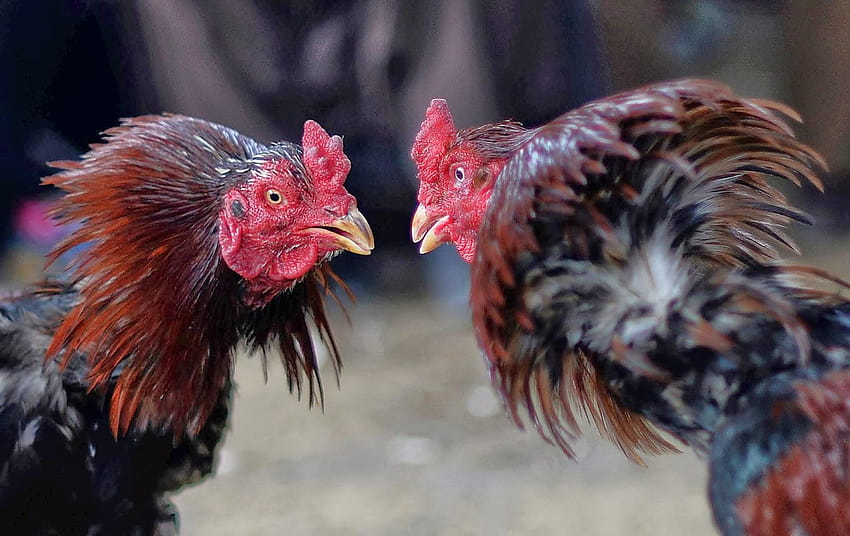
Cock fighting is a tradition that originates hundreds of years ago, deeply woven in the cultural heritage of many cultures around the globe. While it is generally perceived through a perspective of debate and ethical debates, several groups hold deep-seated traditions surrounding this sport. The sport typically involves a pair of cocks prepared to fight in a confined space, driven by innate drives that are as old as the birds themselves. Beyond the violence, however, lies a deep cultural significance that reflects the principles, social frameworks, and community engagement within different locales.
In various areas, cockfighting serves as a central hub for collective meetings, encouraging friendship among competitors and spectators together. It creates a feeling of identity as people come together to cheer for their beloved birds and share in the thrill of the fight. The customs associated with cockfighting, from the raising of the cocks to the readiness for matches, are often steeped in tradition and care for the creature, showcasing a rich relationship between humans and their winged companions. As we explore the details of cockfighting, it is revealed to be clear that this activity is far beyond a mere game; it is a expression of communal unity and cultural heritage.
Historical Context of Rooster Fighting
Cockfighting has beginnings that trace back countless of years, with evidence found in ancient societies such as those in Persia, the Indian subcontinent, and the Hellenic world. Documented records indicate that the custom was widespread in these civilizations, where it was not merely a means of entertainment but also a communal gathering that brought communities together. In classical Greece, rooster fighting was associated with celebrations and sports events, showing the societal importance of such activities in public life.
As the custom grew globally, it took on different forms and interpretations. In the Roman Empire Empire, rooster fighting became connected with combat games and further public entertainments. This era saw the formation of rules and practices of rearing, which heightened the competitive nature of the fights. The activity remained favored throughout the medieval period and into the Rebirth, where cockfights were often held in pubs and towns, bringing in audiences and fostering local bonds.
The arrival of rooster fighting to the American continents occurred during the settlement era, where it quickly achieved favor in many localities. It became a representation of local identity and self-respect, with fighting birds often being painstakingly bred and prepared for competition. Despite shifting societal perspectives and increasing regulation, cockfighting has retained a presence in numerous cultures, changing to show both historical traditions and current community relationships.
Cultural Importance and Community Engagement
Cock fighting has long-standing connections in multiple cultures around the globe, serving not just as a source of entertainment but also as a significant cultural event. In various communities, it is linked with regional traditions and practices, reflecting cultural values and community structures. The event often draws big audiences, transforming locations into vibrant centers of socialization where neighborhood ties are enhanced through shared experiences. This community-focused nature allows individuals to engage in a common leisure activity that fosters a sense of identity.
Moreover, cockfighting events can serve as a platform for social gathering. Participants and viewers alike come together to socialize, address community topics, and form connections that go beyond the venue. Betting on matches adds an thrill that increases the involvement of the community. RR88 These interactions contribute to a sense of brotherhood and shared assistance, enhancing social relationships within neighborhoods where cockfighting is prevalent.
The significance of this sport extends far beyond mere entertainment; it is a cultural expression that reflects the essence and traditions of the communities participating. Breeding and training cockfighters can involve entire families, often becoming a family tradition transmitted through the years. As such, the activity of cockfighting not only protects cultural stories but also fosters engagement across various age demographics, including youth who gain important skills and values from their elders. This engagement across generations reinforces the value of this practice as a community pillar that goes further than just events.
Lawful and Ethical Considerations
Cockfighting encounters significant legal challenges across numerous regions. In numerous countries, including the United States, it is prohibited due to worries about creature cruelty and public safety. Laws vary greatly, with some areas imposing strict punishments, while others may have less rigorous enforcement. The legal status often represents broader societal values about animal rights and the tolerability of blood sports. As communities wrestle with these laws, the underground nature of cockfighting can lead to an rise in associated criminal activities, further aggravating the issue.
From an ethical standpoint, the practice raises issues about the treatment of animals and the rationale behind engaging in such activities. Proponents of cockfighting may argue that it preserves cultural traditions and offers entertainment, while critics underscore the suffering inflicted on the birds and the moral implications of raising animals for combat. The ethical debate is often polarized, with advocates for animal welfare pushing for more strict regulations, while supporters present arguments of personal freedom and cultural heritage.
As societal attitudes regarding animal rights change, the future of cockfighting remains uncertain. Communities involved in cockfighting may face themselves at a crossroads, balancing their cultural practices with evolving legal frameworks and ethical perspectives. The ongoing discussions about animal welfare and cultural significance will likely influence the landscape of cockfighting, influencing both its acceptance and its regulation in the years to come.